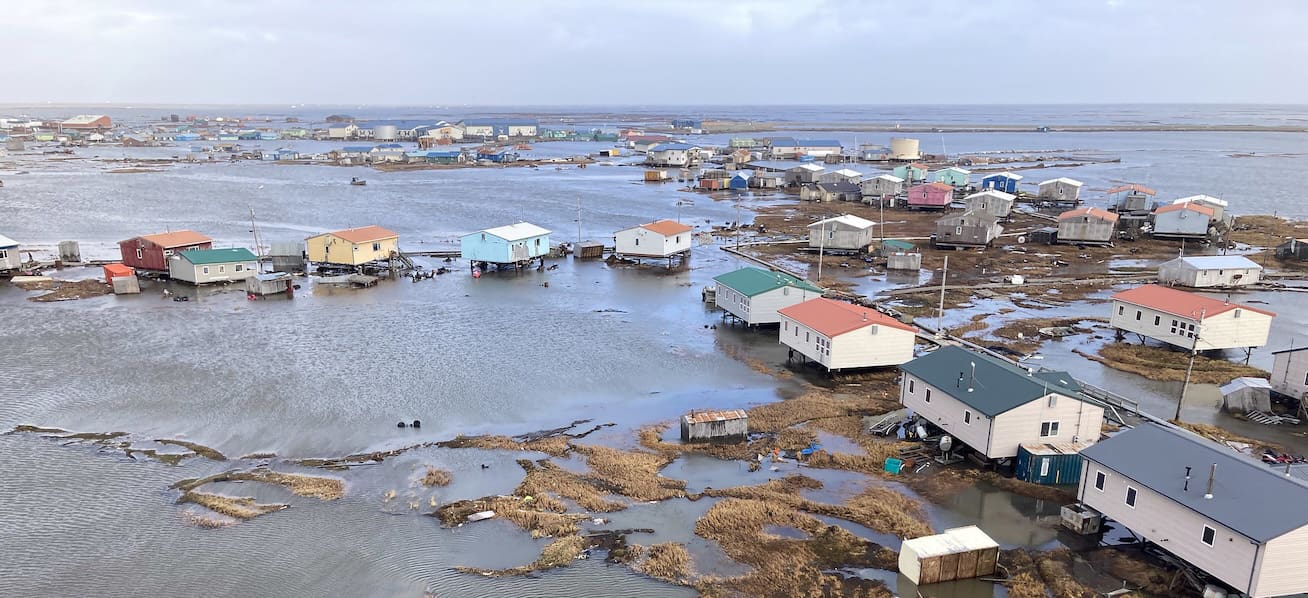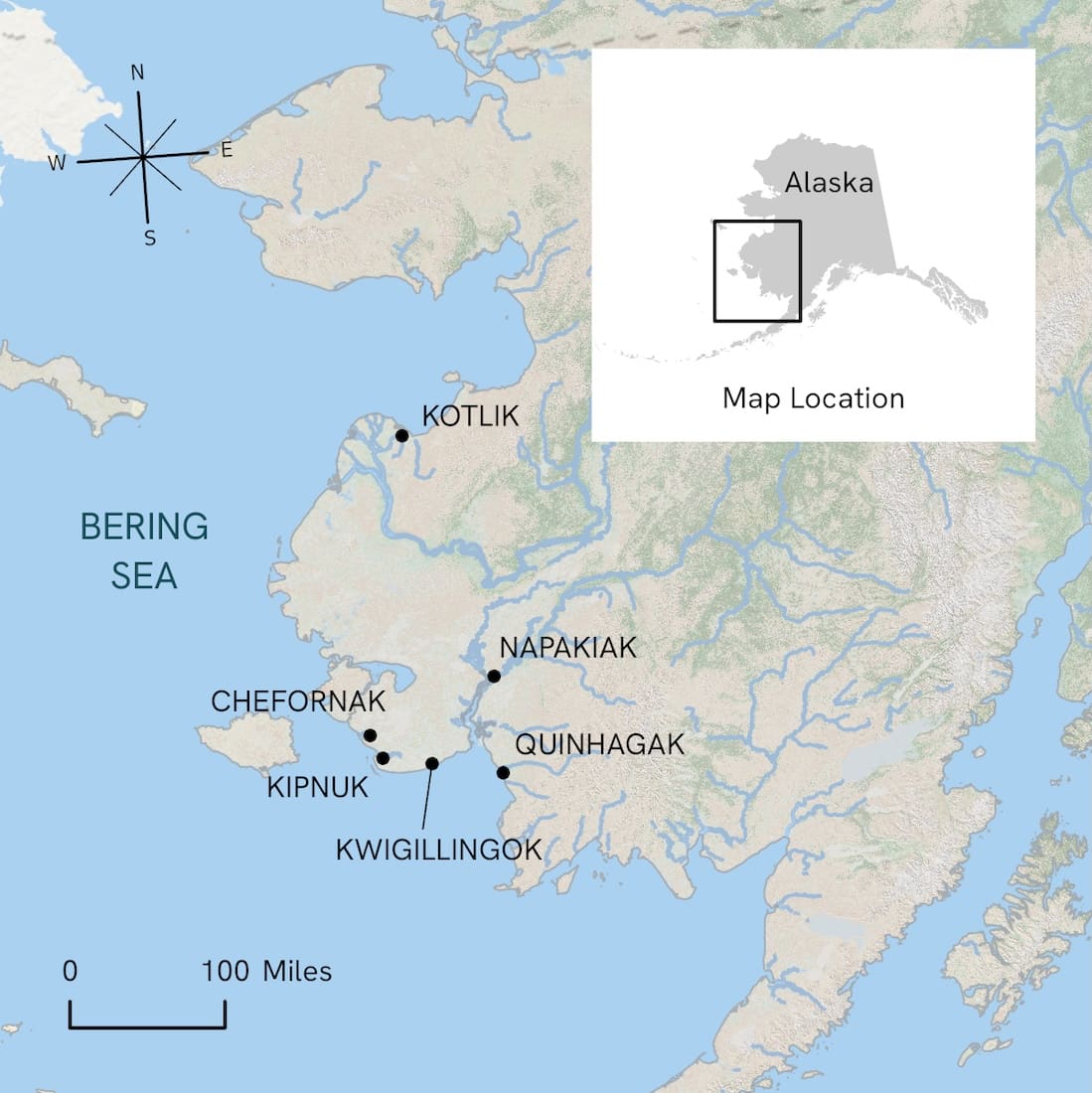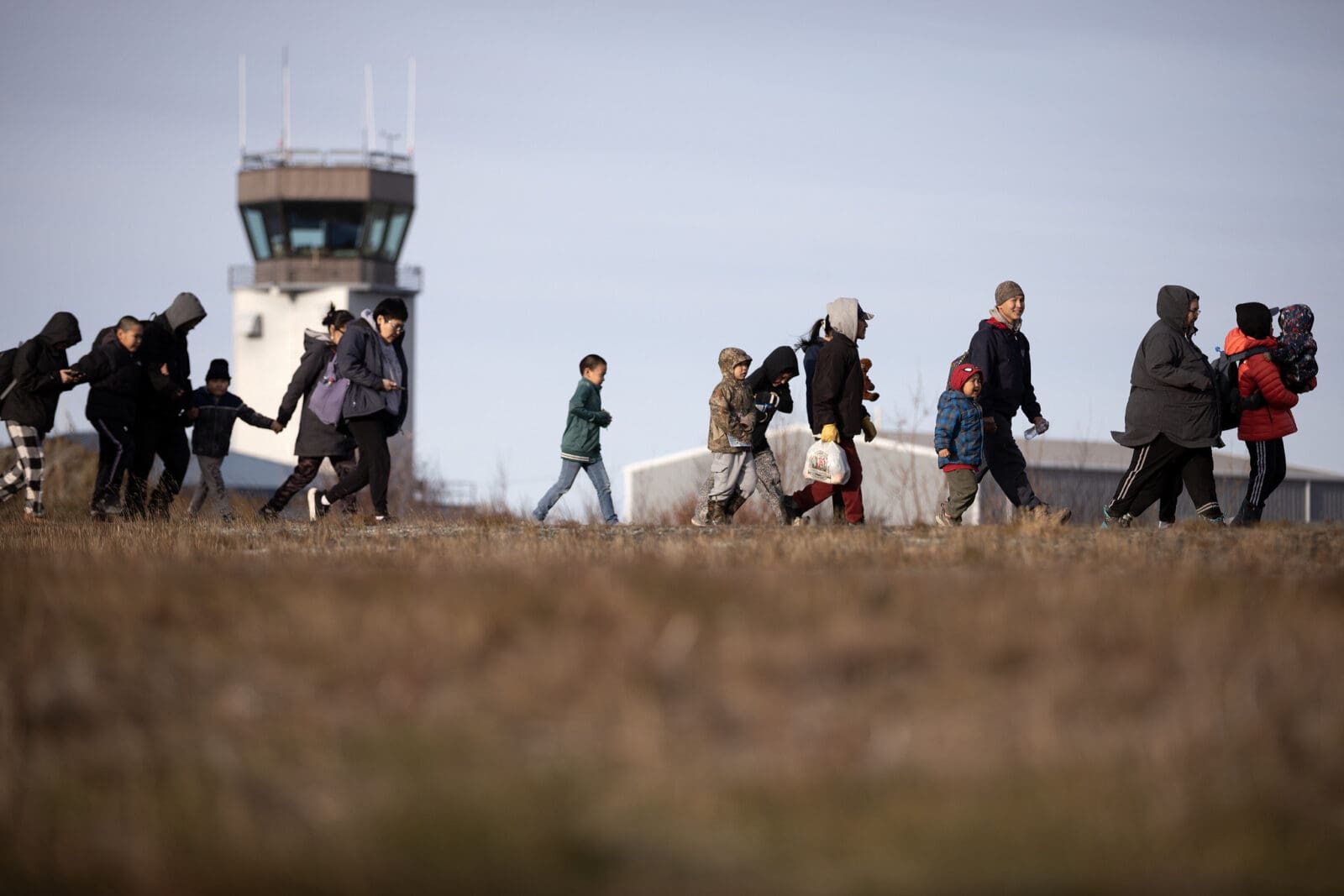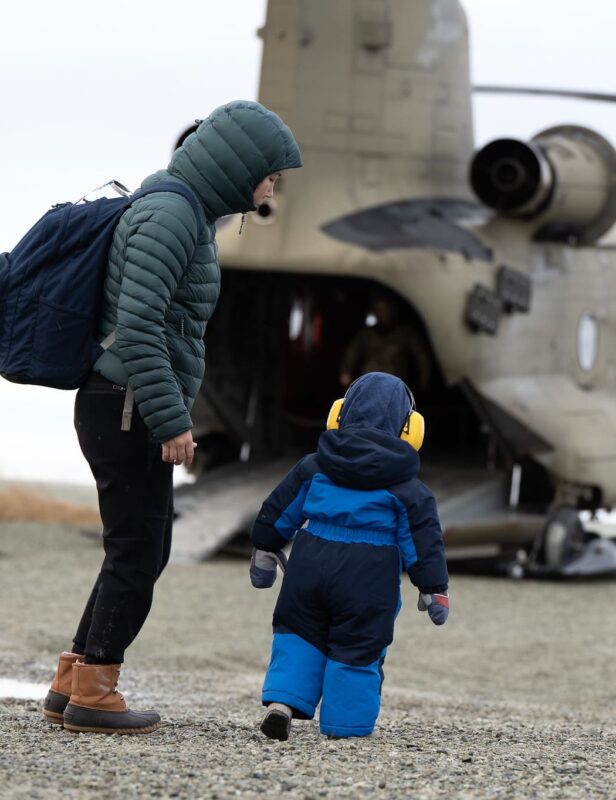This month, a catastrophic fall storm struck Western Alaska with overwhelming and unprecedented force, leaving a swath of destruction across the low-lying villages of the Yukon-Kuskokwim Delta.
At least 15 villages suffered severe flooding and wind damage caused by the remnants of Typhoon Halong, with one person dead and two missing. In Kipnuk and Kwigillingok, entire homes were torn from their foundations or swept away. In Quinhagak, nearly 60 feet of shoreline have been peeled back, leaving critical infrastructure in peril and destroying cultural history. Water and sewer systems are shattered, power remains out in many areas and vital infrastructure lies damaged or submerged. Over 1,500 residents have been airlifted to regional hubs and Anchorage in the largest disaster evacuation in Alaska’s history.
Communities at the Heart of the Storm
The human toll is immense. Many families don’t know if they will have homes to return to. Some villages face uncertainty whether they will be able to rebuild or be repopulated at all. For the Alaska Native communities in this region, place and culture are inseparable: travel by snowmachine or boat, subsistence fishing and hunting, food storage and sharing networks all depend on local infrastructure. The destruction has disrupted livelihoods, food security and the ability to remain in place, the foundation of the deep connections to ancestral homelands that define life in this predominantly Yup’ik region.
In an especially powerful and poignant Op-Ed in the Anchorage Daily News, Samuel Johns shares:
“These are not faceless statistics. These are families who have buried their loved ones in the same ground where they hunted, fished and gathered for generations. Their displacement is not just a loss of land; it is a loss of language, tradition, and the rhythm of life itself.”
A Pattern Shaped by a Warming Climate
This storm is part of a worsening pattern. The Y-K Delta sits on a flat coastal plain once protected by early-forming sea ice that buffered fall storms. As the Bering Sea now freezes later and thaws earlier combined with warmer temps across the North Pacific Ocean that intensify storms, these communities face stronger, more frequent surges that reach farther inland. Three years ago, ex-Typhoon Merbok struck the coast farther north, damaging dozens of nearby villages. While Halong’s path lay slightly to the south, both storms hit before sea ice could form—a stark warning of how warming oceans and delayed freeze-up are escalating risks.
More than Rebuilding
Recovery is about more than restoring structures. In these communities, life depends on the land and water—the salmon, moose and berries that sustain families through the long winter. With smokehouses, freezers and shore access destroyed, many have lost both their stored food and the means to harvest more in the future. The damage has disrupted not just daily life but the ability to live from the land itself. Cultural history and knowledge is also being lost in this disaster, including thousands of artifacts dating back to the 16th century that currently lie scattered across shorelines, which archeologists and community members are now hurrying to recover.
“As Typhoon Halong tests the strength of our coasts, the Yup’ik people are reminding us what perseverance truly means — to stand firm in the face of loss, to rebuild from the heart, and to remember that healing Alaska is not the work of one people alone, but of all who call this land home.”
— Nalikutaar Jacqueline Cleveland, Native Village of Kwinhagak (Quinhagak) Tribal Council Member



